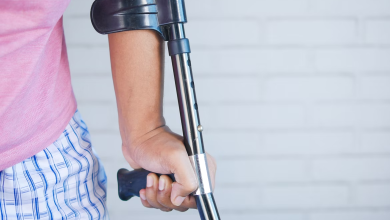Common Hazards For Your Pets Inside and Around Your Home
Pet ownership has skyrocketed because of the pandemic and many people around the world are looking for more companionship as social distancing was a key strategy in combating the spread of COVID.
Now that many countries and cities around the world have lifted most restrictions, many people have returned to a sense of normalcy resulting in less time for their pets.
Just like humans, dogs and cats require some form of entertainment and companionship. Allowing them to independently be alone without human interaction when you’re out may cause them to seek other sources of entertainment either out of boredom or curiosity.
In this article, we’ll go through some of the hazards your pets may run into and what you should do to preemptively deal with them before you leave them alone. We’ll focus entirely on cats and dogs as they are the most common pets that can freely roam around your home.
What Are Some Hazards Around the Home and What Can You Do To Deal With Them?
Dust, Dirt, Spills, and Other Things On the Floor

Your pets are more likely to be running around on the floor and may spend most of their time down there. They may be witness to things that you may never notice daily.
Minor hazards, such as dust, dirt, and spills can build up over time on a daily basis. While not hazardous in most cases in small quantities, not cleaning around the home can cause your pet to digest, smell, or lick something that may cause them pain.
When having kids or pets, it is key to be on top of your house cleaning as dirt and spills can easily accumulate over time, even without you knowing.
Ensure you use cleaning products that are safe for your pets and remember fragrances may be off putting for your pets. As your pets are likely to generate hair, fur, and other foreign small dirt from outside the home into your house, having a pet-focused vacuum cleaner to vacuum on a near daily-basis is key to keeping your home fresh for both you and your pets.
Finally, other objects such as small toys or anything that can easily digest into your pet’s mouth can be hazards on their own. You may drop anything from erasers to coins to even small toys. While it may seem logical for us to not ingest them, your pets may do so anyway out of curiosity.
Ensure any objects you drop are picked up immediately afterwards as they are free game for your pets to potentially ingest or lick.
Boredom (Biting and Destroying)
If you’re working from home or leaving your pet alone while out, they’ll most likely roam your home and find things to ease their boredom. A very common activity younger untrained pups do is find anything to bite on and destroy.
This could include anything from pillows, your plants or even paper. While in the process of biting objects like these, they may accidentally ingest some of the hazardous material.
For example, the filling from pillows or the chemicals used to manufacture paper are all hazardous for both humans and animals.
Other things that are much more valuable and potentially instantaneously dangerous are wires and electronics found throughout the home. Your pet may destroy key wires that could be expensive or potentially get a dangerous electrical shock.
Ensure to always do walkthroughs of your home to identify key hazard areas and place them out of reach of your pet. Perhaps place your plants in a different room or unplug all your wires and store them in a closet. Your pet will eventually find them as they have hours to kill while waiting for you to entertain them.
Various Insects and Other Creatures in Your Yard

Your yard can contain numerous hazards to your pets. Like the items listed prior in this article, your pet may ingest, bite, or destroy various objects or living things around your yard.
To reduce the number of uninvited creatures such as insects, consider maintaining your yard to deter these insects. This includes anything from removing dead plants, cutting and pruning your grass and trees, and reducing the amount of weeds insects like to hide in through using weed killers for your lawn.
While weed killers are great for weed and pest control, they are extremely hazardous for your pet. Ensure to either block your pet from going near your lawn while the weed killer is active or use organic herbicides that are safe for your pet.
Moving beyond insects are larger animals, such as wild coyotes, eagles, or even other cats all pose threats to your pet. If you own a small pet, such as a small dog, they are prone to being attacked by opportunistic coyotes or eagles. Be mindful of any city-wide warnings and always supervise your pet outdoors. Wild animals are patient and are willing to wait for opportune moments.
Conclusion
The pandemic has brought many cute furry friends we may call our best friend or even our children into our home. With the world returning to some form of normalcy, we’ll most likely be going out and enjoying ourselves while they stay home alone.
Just like human babies, pets have similar, but their own unique hazards they could encounter on their own. Ensure you’ve done a visual check around your home of hazards on the floor and other objects your pets could get into. It is highly recommended you get a second or third pair of eyes, like a friend or family member who isn’t in your home often, to look as well.
They may spot obvious things you may oversee since it is your home.
Ensure you also preemptively clean and wipe any messes in advance of them becoming a larger hazard than they already are. Wipe messes and vacuum dust and dirt.
Finally, don’t forget being outside presents its own unique problems including insects to larger animals such as coyotes and eagles.
With the proper preemptive preparation, you’ll have a safe environment to raise your pet!










